Sony XR-55A90J Review
Sony reasserts its OLED TV credentials for the umpteenth time
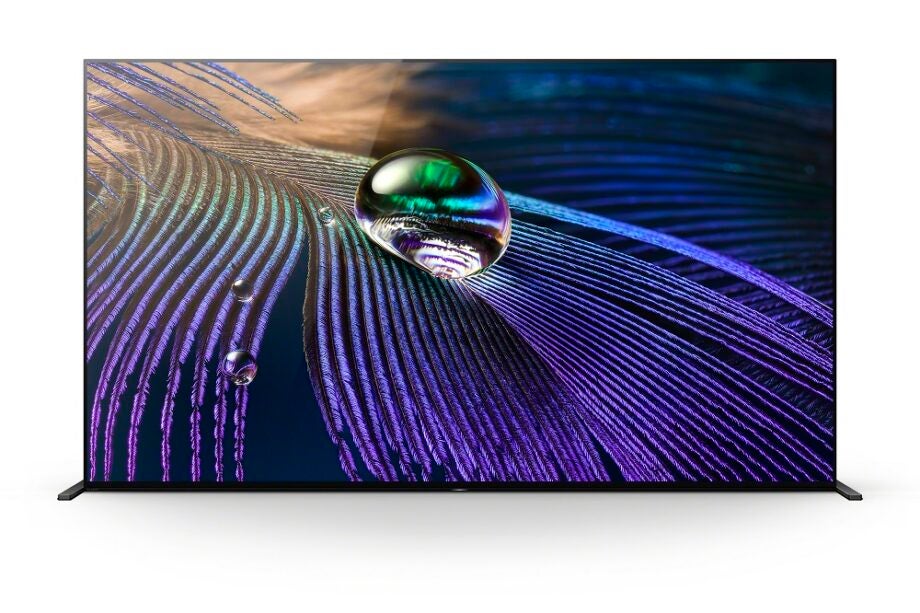

Verdict
Finding an authentically poor TV is becoming more and more difficult – but it’s still pretty easy to identify one of the very best.
Pros
- Superb picture quality
- Great new OS and remote control
- Some HDMI 2.1 compatibility
Cons
- Some HDMI 2.1 omissions
- Quite pricey
Key Features
- Bravia CoreStreaming service exclusive to selected Sony 2021 models
- Google TVSupports the latest Google OS out of the box
- VRR supportSupport for Variable Refresh Rates expected in future firmware update
Introduction
There’s no such thing as ‘just’ a television any more – these days, a TV has plenty of bases to cover. So the Sony A90J is specified to work as a next-gen games console monitor, as a portal to a world’s worth of streaming and on-demand video services and, in extremis, as a music speaker as well as ‘just’ being a television.
As such, Sony has loaded the A90J with a stack of HDMI 2.1 functionality. It’s given it a shiny new smart TV interface and access to a bespoke, exclusive streaming service. It’s even included a fancy-pants audio arrangement.
But, let’s face it, a TV is for watching. If the Sony XR-55A90J is a good television, the rest of the stuff will just fall into place…
Availability
- UKRRP: £2699
- USARRP: $2799
- EuropeRRP: €2599
- CanadaRRP: CA$3299
- Australiaunavailable
The Sony XR-55A90J is on sale, and in the UK it will set you back a not-inconsiderable £2699. It can also be had as a 65in screen, which costs £3499, while those for whom size is everything might be interested to learn there’s also a humongous 83in version, too. No UK price has been set for this whopper as yet…
However, American customers can pick it up for $7999. For them, the 65in model sells for $3799 and the 55in goes for $2799. At the moment, Australian customers only have a price confirmed for the XR-65A90J – it’s AU$4999.
Design
- Depth fluctuates between 6mm and 41mm
- Can sit in a couple of positions
- Typically accomplished build quality
Unless you’re shopping in the bargain basement, it’s difficult to find a new TV with bezels any bigger than ‘minimal’ – and, obviously, you’re not about to find the XR-55A90J down there. So when it’s viewed from straight-ahead, this Sony is basically all screen. There’s barely any room for the tiny ‘Sony’ logo on the bottom bezel.
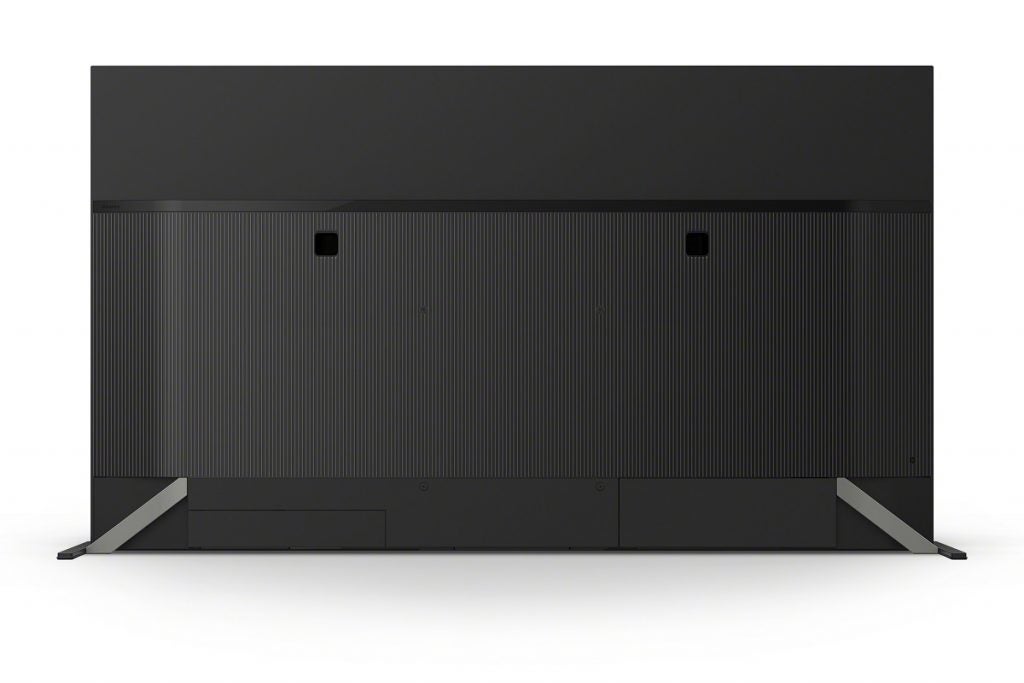
Look at it in profile, however, and the A90J is just slightly more problematic. LG has recently demonstrated with its ‘Gallery’ series of OLED screens that a consistent depth of just 2cm can be achieved – but the XR-55A90J is slightly more old-school in this respect. Near the top of the screen it’s a mere 6mm deep; but let your eye travel a little further down, and the Sony swells to 41mm.

A TV has to keep its electronics, its speaker drivers and its inputs somewhere, I know, but the XR-55A90J isn’t the svelte wall-mounting proposition you might have been hoping for.
If you’re happy to stand the Sony on its feet, though, at least you have options. In the first position, the feet actually outflank the edges of the screen, and they support the screen just a fraction above the surface on which it’s standing. Switch them to the second position and, while they’re still quite a distance apart, they’re at least inside the boundaries of the screen itself – and there’s now room to position a soundbar beneath the screen.
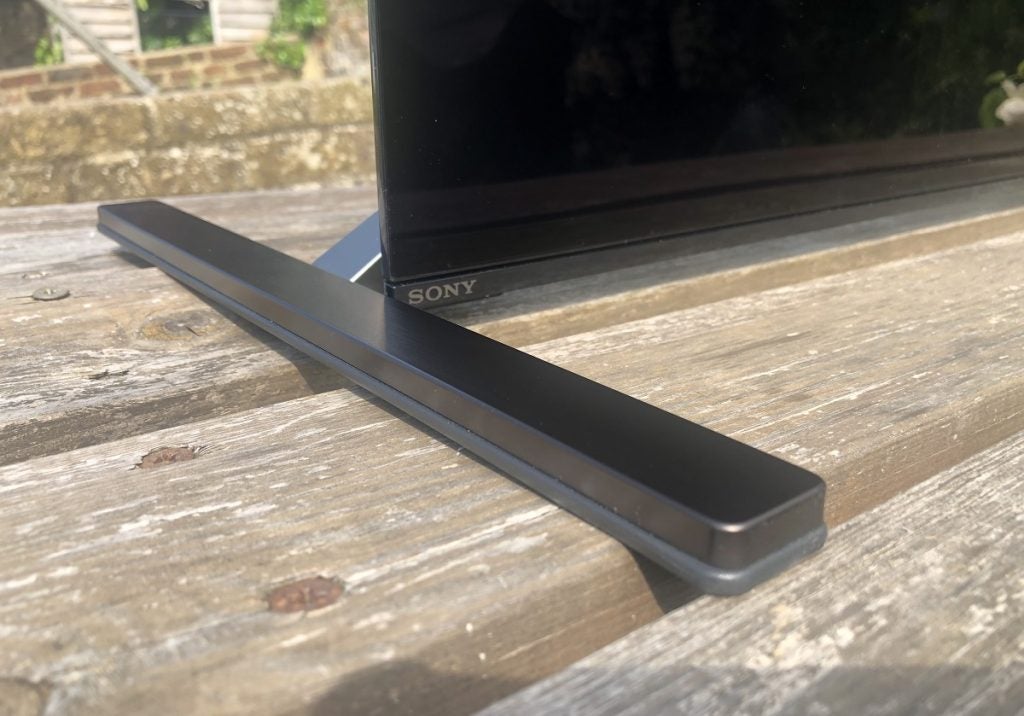
Features
- Google TV interface
- HDMI 2.1 (to an extent)
- Sound from the screen
The XR-55A90J has four HDMI inputs, two of which are 4K at 120Hz, ALLM and 48Gbps-enabled – so they go most of the way to getting the best from a next-gen console. In fact, given that the PlayStation 5 doesn’t as yet support VRR, Sony is probably fine with this TV not supporting VRR either. However, the Xbox Series X most certainly supports VRR, and some alternative TVs offers greater HDMI 2.1 compatibility, too.
One of those two HDMI sockets also covers eARC, and in addition there are three USBs, an Ethernet socket, binding posts for two TV tuners and even composite video inputs. Wi-Fi and Bluetooth connectivity are also on board.
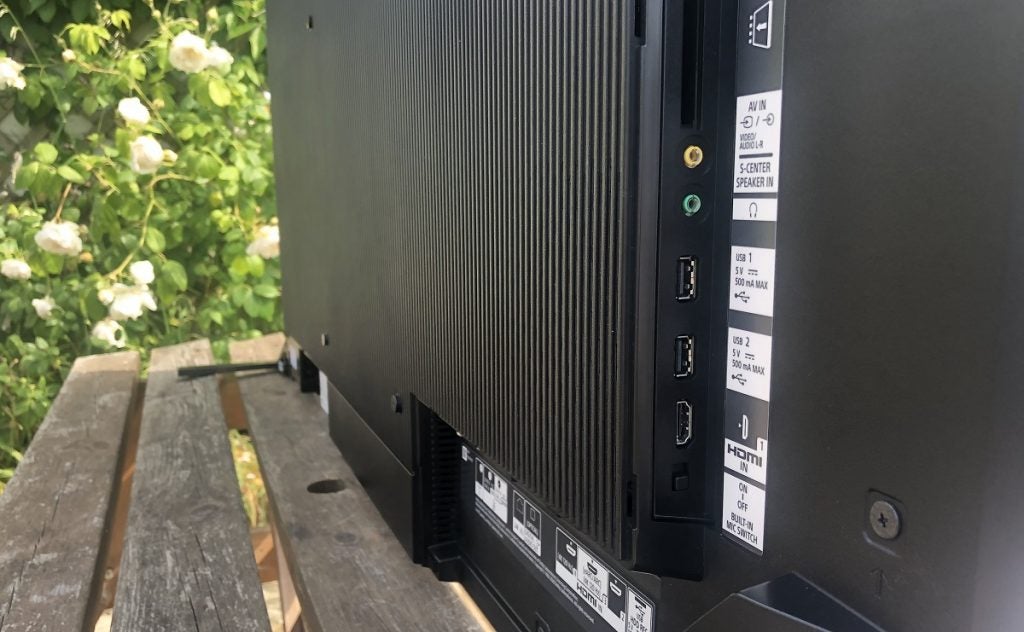
Any TV that doesn’t offer a full suite of HDR standards has to fall into the ‘tiresome’ category – which basically means every TV that isn’t a Panasonic or a Philips. Nevertheless, Sony’s omission of HDR10+ is a touch less egregious than Samsung’s lack of Dolby Vision.
The picture is administered by Sony’s new XR processor, which takes the AI capability of the previous X1 processor and adds something that Sony is calling “cognitive intelligence”. So, in theory, you combine machine-learning algorithms to enhance picture performance, plus more granular scene analysis across multiple zones based on contrast, colour, detail, depth of field and every other image component. This is currently Sony’s flagship method of delivering the most convincingly lifelike images possible.
Sony has finally seen sense and binned Android TV as its smart TV interface, replacing it with the entirely less pushy Google TV. It’s a smart, if overdue, move – Google TV presents a more welcoming interface, and it’s more usable too. As well as the usual Netflix, Amazon Prime Video, Disney+ and Apple TV streaming service apps (as well as many others), Sony has also included its Bravia Core movie-streaming service.
It’s an authentically worthwhile feature, with lots of content and the ability to stream in very high quality (if your broadband is up to it). It even features some IMAX Enhanced content – although, for some unaccountable reason, selecting an IMAX Enhanced movie doesn’t automatically select the A90J’s ‘IMAX Enhanced’ picture mode.
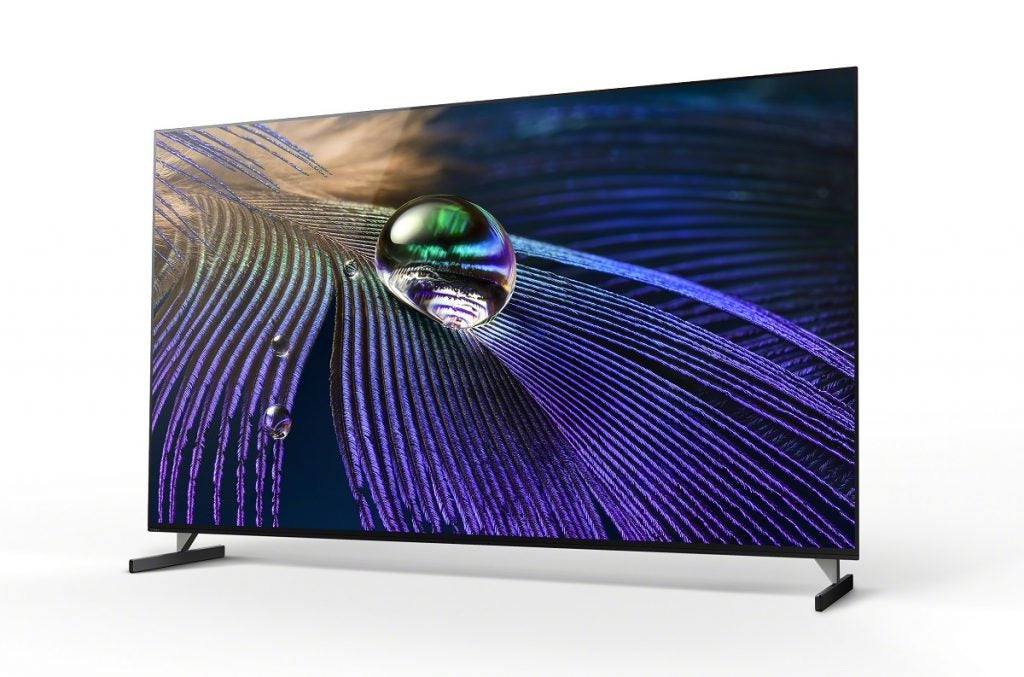
UK customers will be alarmed to find no sign of iPlayer, All4, ITV Hub or any other catch-up TV service here. Sony is promising a fix that will add them ‘later’ in 2021 – but just as surely as LG deserved pelters for leaving them off a lot of its 2020 TVs, Sony most certainly does too.
Navigating the Google TV interface, set-up menus and what-have-you is done using a newly refreshed remote control handset. It looks and feels good, isn’t overloaded with buttons and has even grown some backlighting.
As far as an audio system goes, the A90J features the latest implementation of Sony’s Acoustic Surface Audio+ arrangement. Reinforced by two rear-firing low-end drivers, this system uses actuators to turn the entire surface of the screen into a speaker. It’s an impressive arrangement – and Sony is so convinced by it, the A90J actually features speaker connections on its rear panel in case you want your TV to become the centre channel of a surround-sound setup.
Picture quality
- Impressive motion control
- Wide contrast, sky-high detail levels, convincing colours
Sony has been good enough to include its Bravia Core service with the XR-55A90J. As such, an IMAX Enhanced-certified stream of Edgar Wright’s Baby Driver looks as good a place as any to start, even if the sky-high broadband speeds needed for its highest-quality ‘Pure Stream’ version aren’t always available in these parts.
In any event, the results are quite noticeably superior to ‘good’. They might more accurately be described as ‘outstanding’ – because, when given some high-quality content to work with, the Sony is capable of profoundly impressive pictures.
And they’re impressive in every department. Everyone understands that OLED panels are capable of lustrously deep black tones, but here they’re combined with whites that are noticeably brighter than the OLED norm and the result is admirable contrasts. These are enhanced no end by the amount of detail, both broad and fine, contained in both black and white tones.
The overall colour palette is equally striking; the Sony draws on a wide, subtly differentiated and entirely convincing palette, and the result is an apparently limitless number of shades and gradations on which it can call. And again, as well as being nuanced, they’re also lavishly detailed – so any difference in texture, as well as in shade, is identified and reported on.
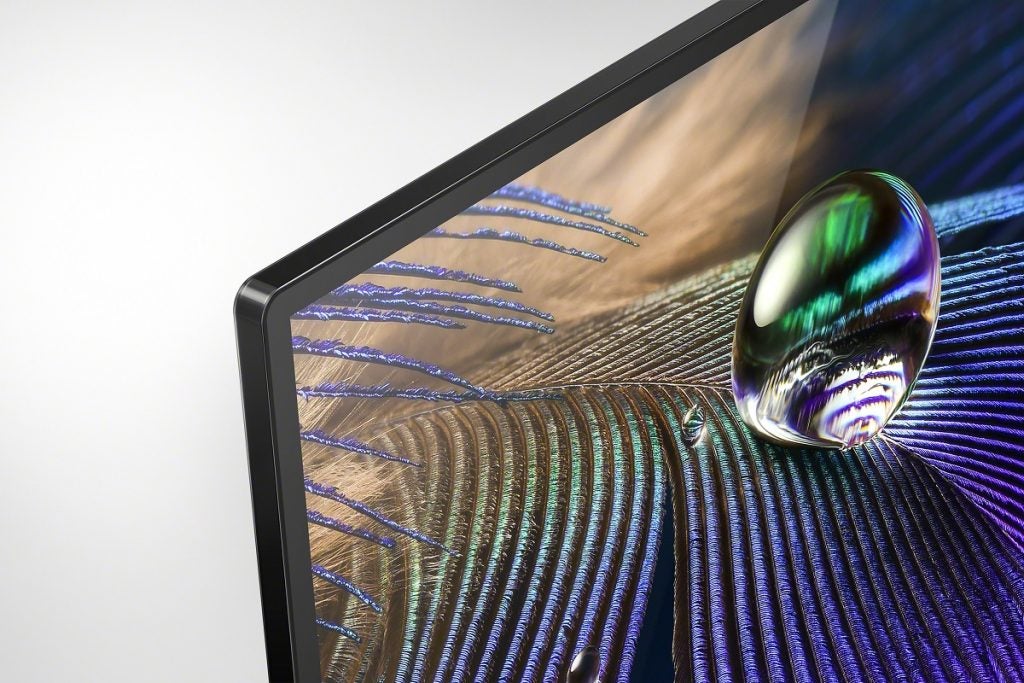
Similarly, edge definition is confident and accomplished. Lines are drawn smoothly, and even when they start to combine with motion, there’s no suggestion of jaggedness. In fact, it may be with on-screen motion that the Sony is at its most startlingly accomplished. Pick a type of movement. Slow pan? Sudden rapid burst? Multi-directional? In opposition to the camera movement? It doesn’t make the slightest difference to the A90J – it just sinks its metaphorical teeth in and grips it securely, without hesitancy or shimmering or any of the other give-aways to which less capable TVs are prone.
It follows that the Sony is a great TV for watching sport – and, as we all know, it’s sport that really separates the flatscreen men from the boys. Multiple objects, all describing different patterns of movement, some moving more rapidly than others, present absolutely no problem to the A90J. And it manages to stay in control of all of this hectic activity while maintaining detail levels and insight into textures.
And as long as you’re not expecting miracles, the Sony is a very worthwhile upscaler. Certainly, the drop-offs in detail levels and overall picture sharpness when it’s upscaling 1080p content are negligible. And even with more antiquated content (for instance, a 720p DVD – ask your parents), it hangs in there manfully, adding detail to dark tones where it can and making sure motion doesn’t just degenerate into a series of smears.
Sound quality
- Quite hefty, direct sound
- A detailed, quite dynamic listen
- No substitute for a proper soundbar
Other brands that have gone to town with their TV’s audio systems tend to let you know about it. Look at the two most notable and impressive examples: Panasonic with its Technics ‘soundblades’ and Philips with ‘sound by Bowers & Wilkins’. You know all about what’s going on there before they’ve even made a sound, don’t you?
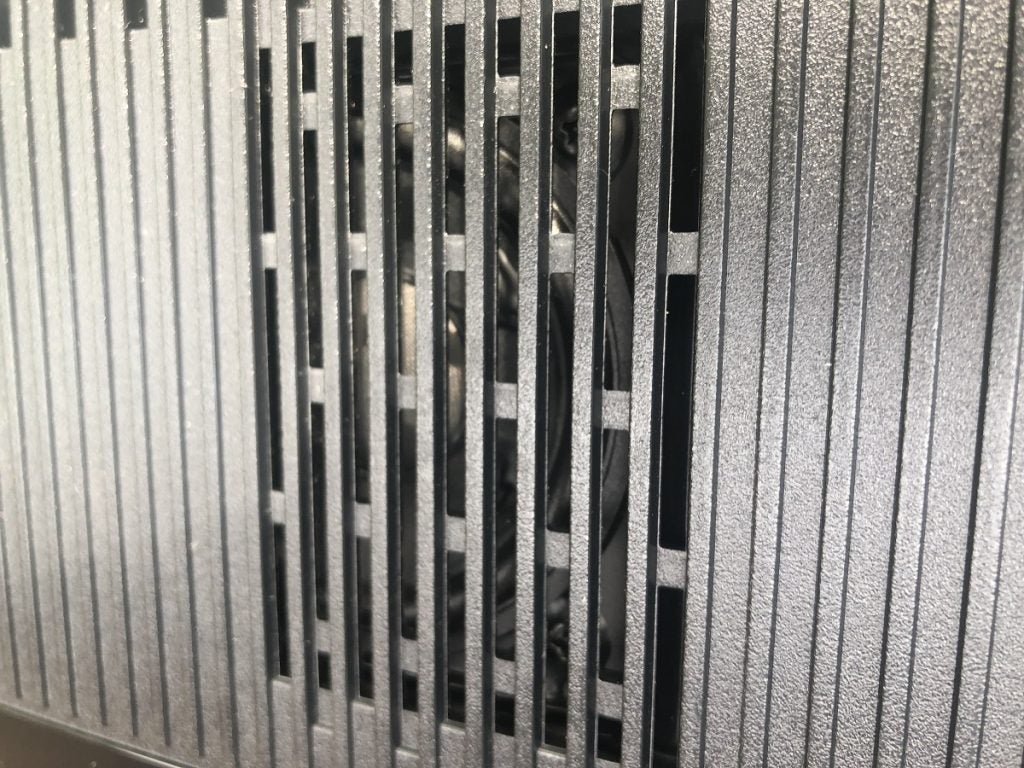
Sony goes another way. The A90J features a couple of rear-firing low-frequency speaker drivers to bring a bit of heft to its sound, but the rest of the frequency range is handled by the company’s ‘Acoustic Surface Audio+’ technology, using actuators to excite the screen itself. And it works a treat.
Sound here is chunkier, more nuanced and altogether more direct than is the flatscreen norm. Since the dialogue is actually emanating from the screen, the overall feel of the presentation is actually quite cinematic. And the A90J extracts worthwhile detail from a soundtrack, too, as well as more than a hint of dynamism.
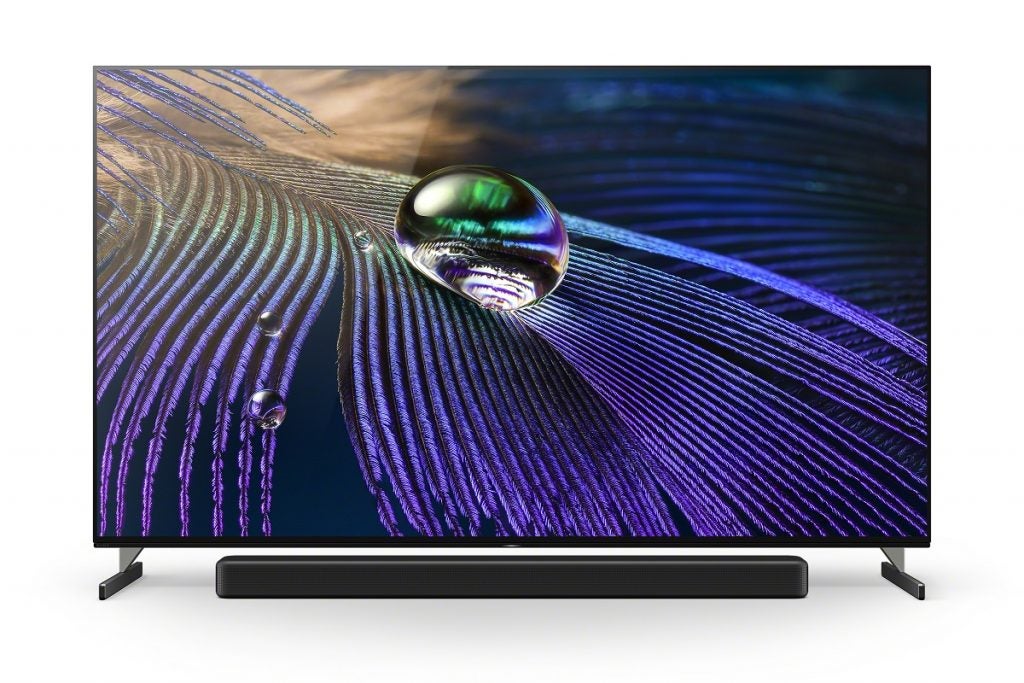
But while it’s admirable when compared to the audio systems fitted to any number of alternatives TVs, in the final analysis the sound the Sony makes doesn’t compare all that favourably with the pictures it delivers. So – yet again – you really should consider a soundbar, at the very least.
Should you buy it?
You don’t mind spending to get the best This is an expensive 55in television, no two ways about it. But it’s also one of the very best 55in TVs money can buy.
You want your TV to be art It isn’t as if the A90J is an XXL, but there are quite a few alternatives that will look less chunky when hung on the wall.
Final Thoughts
Finding an authentically poor TV is becoming more and more difficult – but it’s still pretty easy to identify one of the very best.
FAQs
iPlayer along with other UK catch-up apps currently aren’t supported by the Sony A90J.
The A90J has a brighter OLED panel, an 83-inch version and backlit remote.
The A90J is packaged with a backlit remote, so you can see the buttons in the darker environments.








